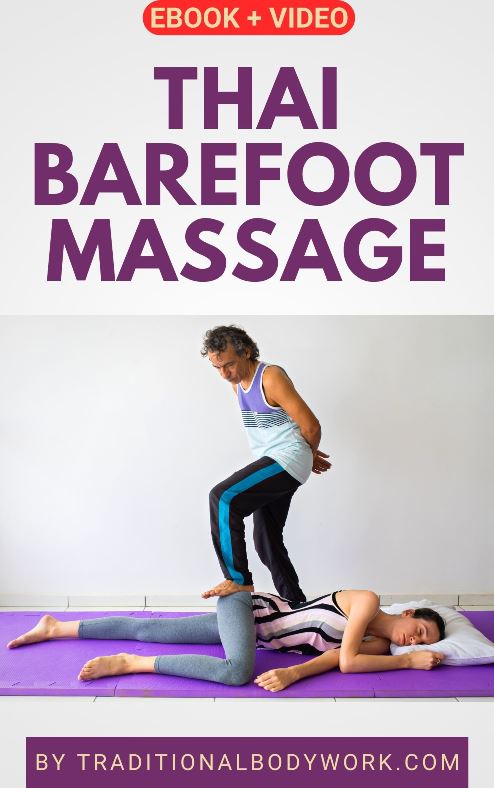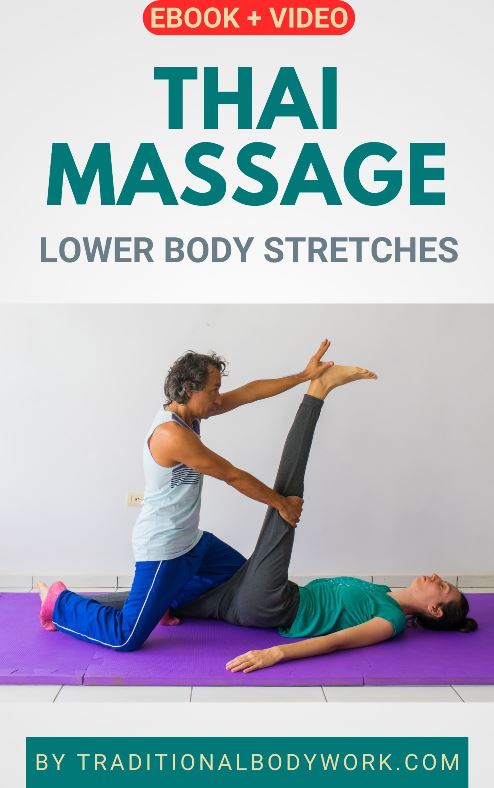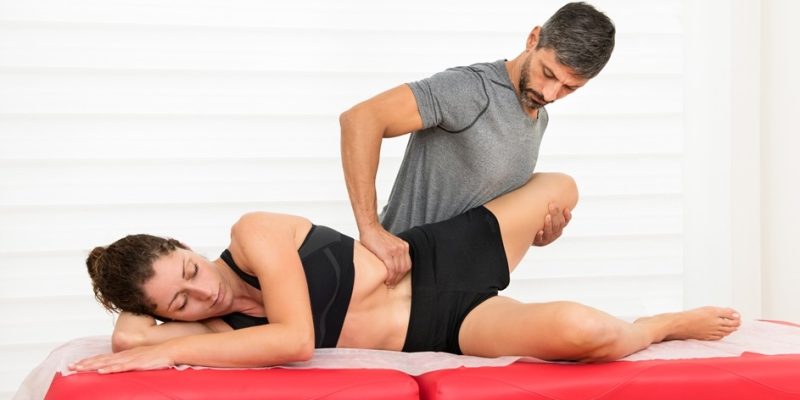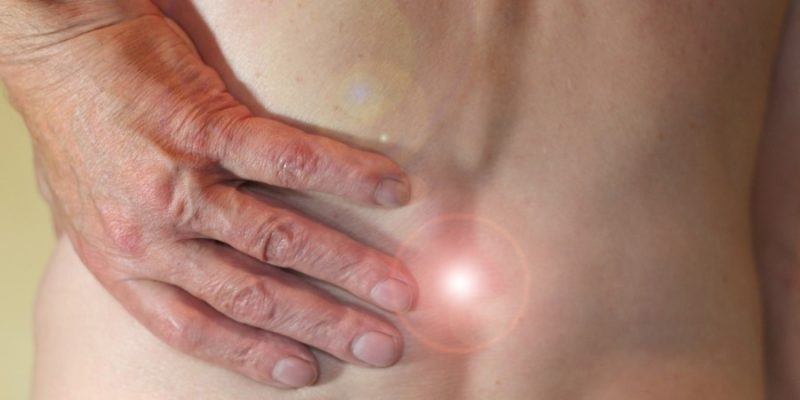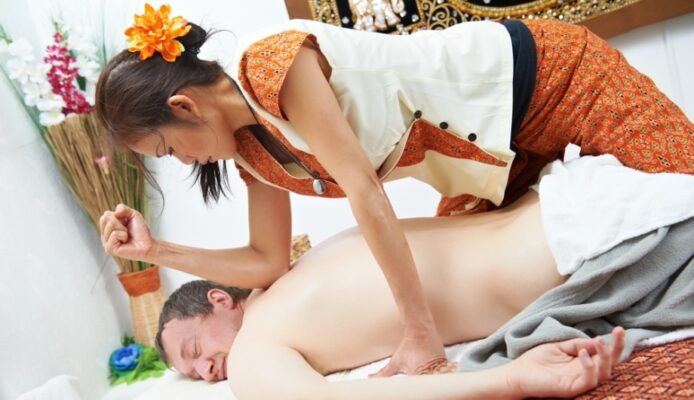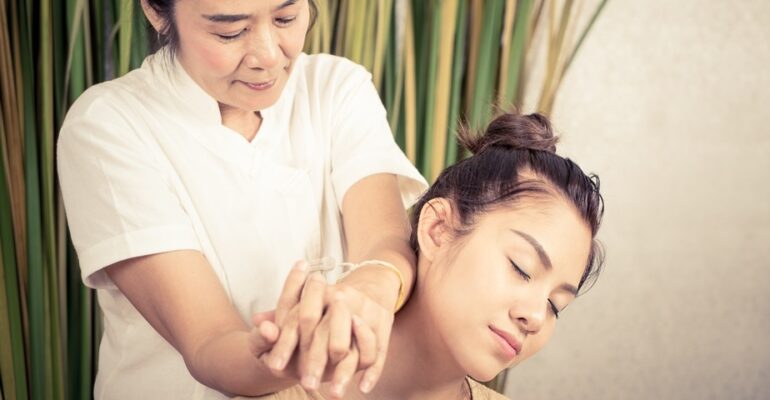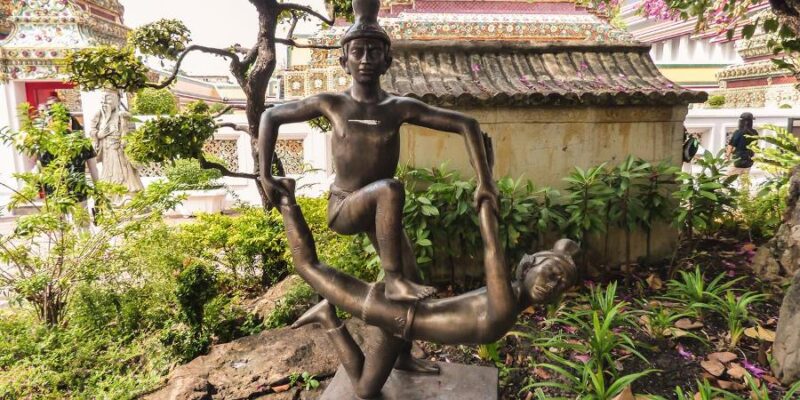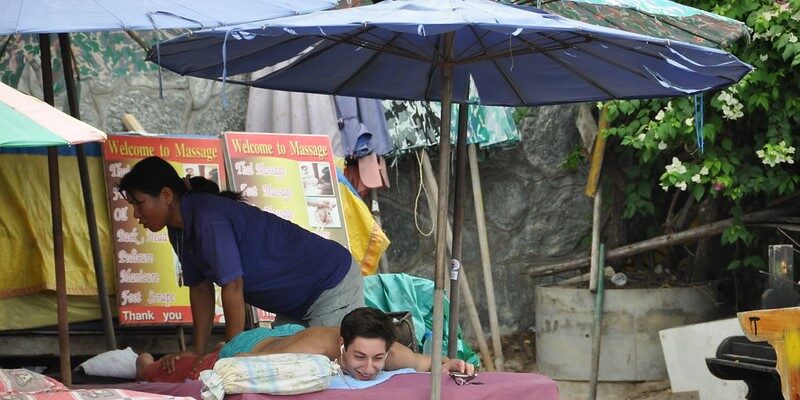
The Cobra Pose is a Thai Massage stretching technique, a back-bending pose, that opens up (or stretches) the chest, a small part of the upper back area, the shoulders, and abdominal area. It’s one of the most beautiful, quaint and famous poses applied in Thai Massage, and it’s often used as the primary stance advertised in promoting Thai Massage.

The pose is derived from the Yoga Asana exercise called Bhujangasana, and it’s supposed to benefit the chest, the shoulders, the (thoracic) spine, the abdominal area (some internal organs, but also abdominal and psoas muscles) and buttocks. Furthermore, it’s said that the Cobra stretch could alleviate asthma and sciatica.
The name Cobra is a translation from the Sanskrit words Bhujanga, which means snake or serpent, among other meanings. Asana means posture or seat, as in Yoga Asanas (Yoga poses). Hence, the Cobra pose is named as it is, because of the resemblance to a Cobra when the snake’s hood is raised.
However beautiful the pose is, it can be a quite difficult (and also dangerous) exercise, which could cause serious injury if not done well, or if the receiver is not capable of receiving it. It looks simple, but there are some contraindications and some issues to take into concern before “executing” this stretch on a client.
One of the things is the strain the Cobra can put on the lower back area (lumbar spine area). Not everyone is flexible enough in the lumbar back area and furthermore, the exercise pushes together the lower back vertebrae, pressing them on each other. When it comes to already existing bulging disks, hernia, slipped discs and so on, the Cobra can be quite a harmful exercise besides inflicting extra pain in the region.
And to make myself clear on this one: I would advise not to do the Cobra when somebody already has lower back complaints, especially when related to spinal issues. We also need to be careful with the neck of the receiver. It’s better when the receiver keeps the head down instead of lifting it up which could give undue strain on the neck vertebrae.
In general, to avoid too much pressure on the lower back vertebrae we should fix the buttocks and pelvis area, say, the lumbar area with our knees, buttocks or even with our feet (standing on the recipient’s buttocks). But even then — we should always pay careful attention to the limits of the receiver.

When the client has shoulder or wrist injuries, the exercise cannot be done in the classic way. There are other ways to do the Cobra pose, for instance, instead of pulling the arms and wrists (see the lead image of this post), one can bring the hands under the armpits around the shoulders of the client (your hands will be at the front of the body of the receiver) and only then lift the client’s upper body part. This avoids strain on the client’s wrists and shoulders.
Another issue is balance. The therapist needs to be standing or sitting (kneeling) stable, and pull straight backwards, and not in a zig-zag or diagonal manner. This to avoid possible injuries on the vertebrae, nerves, or shoulder joints.
And, in any case, the exercise should not be done on pregnant women as for the abdominal stretch that comes with the Cobra.
All by all, an exercise, perhaps nice for advertising the “quaintness” of Thai Massage, but one to be very careful about when applying it. Moreover, there are many other much safer exercises and stretches in Thai Massage that open up shoulders, chest, and abdominal area, and I would rather recommend: “Better safe than sorry!”


